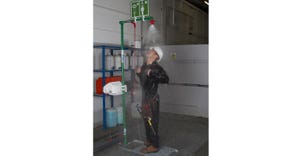Industry-Academic Partnership Opportunities
May 19, 2014

Theoretical to practical application cooperative efforts between universities and businesses of all types is certainly not a new concept. In the late 20th century, pharmaceutical and biotechnology firms began working closely with universities. Successful, forward-thinking companies like Genentech could offer researchers from universities access to resources and funds. At the same time, academic scientists could test wide ranging research data by applying it to the practical development of real goods and technologies. Even better, students have the opportunity actually experience an industry while working on a related university degree.
However, collaboration between industry and the academic community came to the forefront during the throes of the economic downturn. Although unions had long existed, as budgets became more constrained during the recent recession, and funding for research and development diminished, and in some cases disappeared altogether, industry-academic partnerships (IAPs) presented an attractive opportunity. Together these collaborations strategically solved problems, developed innovative products, and created a workforce pipeline that benefited both participating businesses and university graduates.
While funding and government support lagged in the U.S., industry-academic partnerships took root in Europe and the UK. Cooperative associations like those between University of Huddersfield-West Yorkshire, England and AstraZeneca, Audi and the Technical University of Munich, and Microsoft-Cisco-Intel and the University of Melbourne began to flourish—bringing new and better products to market. U.S.-based companies like Lilly and Pfizer developed virtual and face-to-face global collaborations with university scientists and students.
Another result of successful IAPs was the formation of administrative bodies around the world, whose entire focus was on curating opportunities for collaboration and leveraging the long-term partnership potential between industry and academia. There are country-specific organizations whose sole purpose is to foster IAPs. The Danish Ministry of Science, Innovation and Higher Education sponsors an industrial Ph.D. program. The German Center for Research and Innovation supports cooperative projects between Germany and North America, In the UK, the EPSRC Centre for Innovative Manufacturing in Continuous Manufacturing and Crystallisation works with seven universities and is led by the University of Strathclyde in Glasgow, Scotland. The European Commission sponsors Industry-Academia Partnerships and Pathways (IAPP) - Marie Curie Actions and offers funding and oversight for joint ventures between European universities and companies of all sizes.
In the U.S., UIDP (University-Industry Demonstration Partnership) and GUIRR (Government-University-Industry Research Roundtable) offer forums on subjects that range from intellectual property and operational issues to scientific and technological research and innovation. The opportunity for university and industry representatives to meet in person and have real conversations on relevant subjects and ideas, closes the distance between these vital sectors, builds bridges, fosters ongoing relationships, fills needs, and solves problems.
This year, the European Commission implemented Horizon 2020, likely the largest research and innovation ever undertaken in Europe. With the backing of Europe’s government heads and members of the EU Parliament, nearly €80 billion will be made available between 2014 and 2020. The plan is to bring the public and private sectors together and aim for discoveries and world firsts by getting ideas from research to production with readily available funding and little bureaucratic red tape.
While it was large corporations that jumpstarted the move toward IAPs, many small and medium-sized companies both overseas and here in the U.S are now enjoying the benefits of these partnerships. The University of Strathclyde in Scotland, which focuses on entrepreneurial collaborations, has created more than 125 small spin off and alumni-student companies that together employ nearly 900 people. In New Jersey, Rutgers University Department of Mechanical and Aerospace Engineering has developed program where local business and manufacturing leaders mentor graduating seniors. The UConn School of Engineering has been working with Hartford, CT-area businesses for several years on various collaborations including senior projects, summer internships, and joint research.
Joe Sweeney from the University of Huddersfield says, “In my experience, almost all roadblocks to collaboration have not been the project but problems with human interactions. A good industry-academic partnership is set up from the start as a win-win for all sides.”
IAP collaborations among industry, universities, governments, foundations, and end users result in an environment that seems well suited for the networked, interconnected 21st century lives we lead today.
Jim Lenihan, president of Gemco Valve Co., has worked in the valve and seal industries for more than 30 years. Throughout his career, he has held positions in manufacturing, material management, engineering, product management, sales, and marketing.
For related equipment reviews, articles, and news, visit our Valves, Gates, & Airlocks Equipment Zone
You May Also Like


